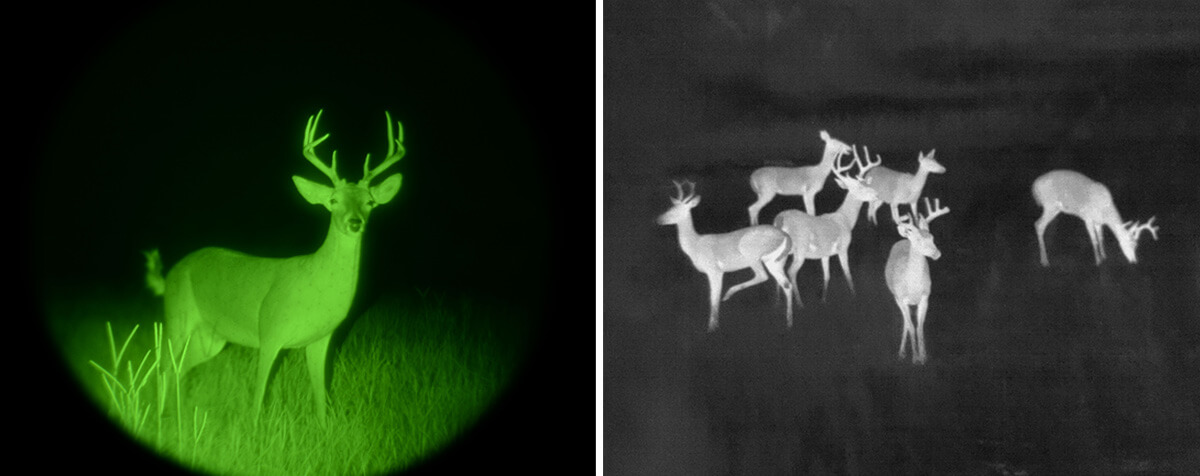Selecting the correct scope is crucial for seeing in the dark. Thermal and night vision scopes provide special benefits for military, security, and hunting uses. Knowing the distinctions between a thermal vs night vision scope will enable you to select the one that best suits your requirements. Every kind of scope has advantages and is appropriate in certain circumstances.
This article explores five key reasons that differentiate between thermal and night vision scopes.
Detection capabilities
Heat signatures are found using thermal scopes. They can see through light vegetation, smoke, fog, and darkness. Because of this, they can detect people and animals with warm blood even in total darkness. Infrared radiation is captured by thermal scopes and transformed into a picture. As a result, users can now identify anything that produces heat.
In contrast, night vision scopes increase the amount of light that is available. For them to produce a discernible image, there must be some ambient light present, such as moonlight or stars. Although night vision scopes work well in dimly lit areas, they may have trouble seeing through smoke or fog or in total darkness. They make the light that is already there better so that you can see more clearly around you.
Image clarity and detail
While thermal scopes may clearly show heat sources, they frequently miss minute details. Usually, the visuals are shown in gradients of color, white, or black to represent various temperatures. Because of this, it is simple to recognize living things but more challenging to distinguish certain traits or items.
In low light, night vision scopes provide sharper pictures. They deliver visuals with more contrast and in hues of green, which protect night vision. Night vision scopes are perfect for tasks requiring precise identification because of their superior ability to detect details and identify things.
Cost and affordability
The price of a scope is a major consideration when selecting between thermal and night vision options. Since thermal scopes use sophisticated technology and can detect heat, they are often more expensive. For high-end versions, they can cost anything from a few thousand to tens of thousands of dollars. They therefore represent a significant expenditure, especially for infrequent users.
Scopes with night vision are usually less expensive. Although premium versions can still be pricey, in general, their cost is lower than that of thermal scopes. For people who want good low-light vision without going over budget, night vision becomes a more affordable choice.
Power consumption and battery life
Power usage is a significant distinction between thermal and night vision scopes. Since their technology is more complicated, thermal scopes often use more electricity. Customers may need to carry extra batteries or have a dependable power supply because this may lead to decreased battery life.
In general, night vision scopes use less energy. Because they require less power, batteries last longer and may be used in the field for longer. Because of this, night vision scopes are more practical for prolonged activities when power efficiency is crucial.
Versatility and use cases
The purpose for which you choose a thermal or night vision scope also influences your decision. Thermal scopes work well in a variety of environments, such as pitch-black darkness, thick vegetation, and bad weather. They are perfect for military applications where heat detection is critical as well as in search and rescue missions.
The ideal conditions for night vision scopes are dimly lit areas with some ambient light. They are great for security, nocturnal navigation, and observing animals. Detailed pictures are provided by night vision scopes, which are necessary for tasks requiring distinct identification.
To conclude
Knowing the distinctions between thermal and night vision scopes will enable you to make an informed choice and guarantee that the equipment you have is appropriate for your nocturnal activities.
